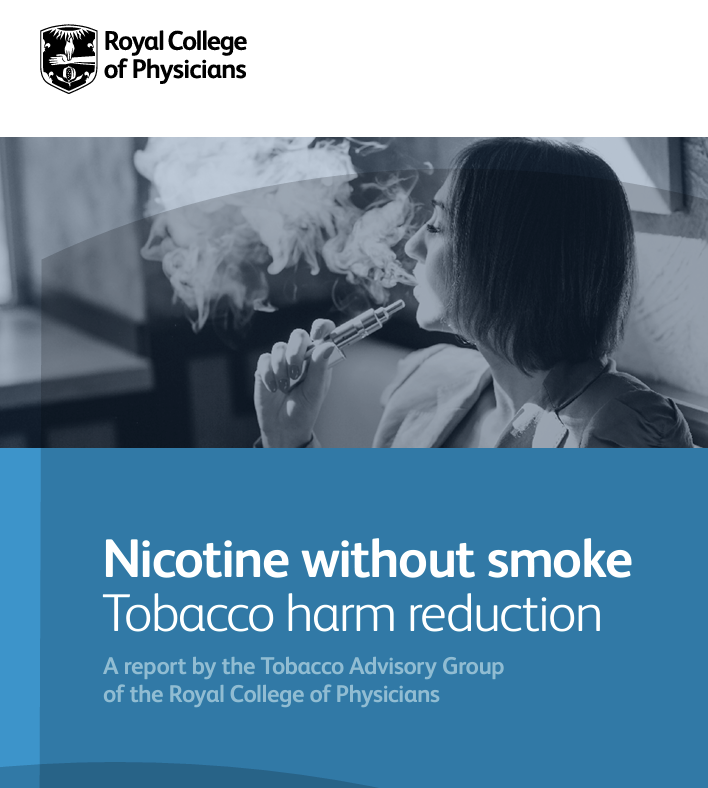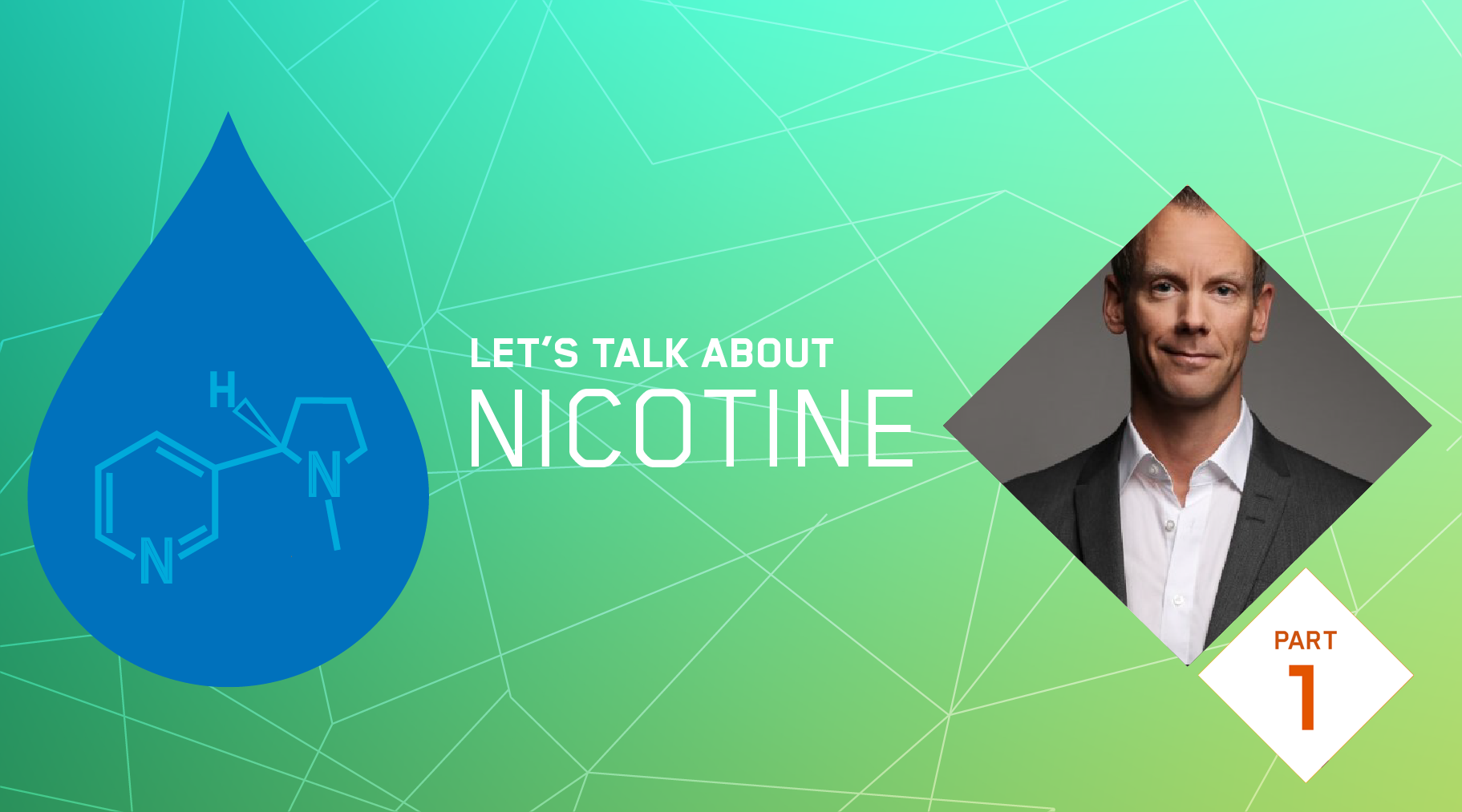//Let’s Talk About Nicotine – Part 1
Posted 13/05/2024 9:47am
In the first of a two-part series, Head of Harm Reduction & Engagement Thomas Nahde discusses the reputational, societal, and regulatory challenges facing nicotine, arguably the most controversial – and misunderstood – chemical of all.
Nicotine is a relatively simple chemical with a very complicated history.
Naturally found in the tobacco plant, it’s also present in some common foods like tomatoes, aubergines, potatoes, and peppers, albeit at substantially lower levels compared to tobacco.
Nicotine’s considered a mild stimulant. Using it can result in a broad range of effects, including increased heart rate, blood pressure and breathing rates[i]. It can be consumed in different ways, but by far the most common over the last few centuries is through smoking tobacco.
Public health experts have concluded that – while nicotine is addictive and not risk-free – it’s the toxicants in cigarette smoke generated by burning tobacco which are the cause of smoking-related diseases.
We believe potentially hundreds of millions of people around the world – including many adult smokers, journalists and even regulators and doctors – still don’t necessarily understand or appreciate this, and this represents the biggest single challenge facing nicotine.
Historically, with nicotine commonly consumed through smoking tobacco, it invariably became inexorably associated with cigarettes, smoking, and smoking-related disease in the minds of most.
Compare and contrast nicotine’s unenviable reputation with that of caffeine – another addictive chemical with several similar effects – but where the most common traditional delivery mechanisms (drinking coffee, tea, or soft drinks vs inhaling cigarette smoke) are significantly less harmful.

It’s not hard to understand where nicotine’s historical stigmatisation has come from… but what about its future?
The Next Generation
In recent years, technological advances have helped us decouple nicotine from tobacco and smoke and led to the development of a range of nicotine-containing, potentially harm reduced next generation products (NGP).
Simultaneously, science has clearly demonstrated it’s the harmful smoke created by burning tobacco that’s responsible for smoking-related diseases like emphysema and cancer.
These are crucial developments for two reasons:
- Transitioning adult smokers to these alternate, potentially harm reduced NGP (the concept of tobacco harm reduction, or THR) presents a clear, exciting global public health opportunity with the potential to substantially reduce the risks of diseases caused by smoking.
- If THR is successful at a population level through NGP, then – as the noted harm reductionist Clive Bates opined – there’s no theoretical reason why nicotine shouldn’t latterly experience a certain level of societal rehabilitation.
Encouragingly, the real-world evidence suggests THR is working in those countries that advocate and endorse NGP.
The UK, for example, is broadly supportive of THR – with an emphasis on vape. Data suggest 2022 figures represent the lowest proportion of current smokers since records began. In Japan, the popularity of heated tobacco products appears to be primarily responsible for a rapid decline in cigarette sales.

Meanwhile, the longstanding use of tobacco snus – a forerunner to tobacco-free oral nicotine pouch NGP – in Sweden provides compelling epidemiological evidence of dramatic reductions in smoking-related disease (Swedish males have the lowest incidence of lung cancer in Europe).
Unfortunately, THR is by no means universally endorsed and advocated across the globe.
Why not? There are several reasons but – in our opinion – it’s primarily because most people still don’t understand that it’s tobacco smoke that’s the facilitator of smoking-related disease, not nicotine.
Even in 2024, these kinds of misperceptions remain a major barrier to even beginning to have a meaningful discourse around nicotine, crucially decoupled from cigarettes and smoke.
For instance, a 2020 study from the Journal of General Internal Medicine suggested:
- 77% of cancer specialists believe nicotine directly contributes to cancer.
- More than two-thirds of lung specialists think nicotine contributes to COPD.
- 86% of cardiologists blame nicotine for contributing to cardiovascular disease.
The science to-date does not suggest any of the above is the case. These beliefs by the medical community are both incredible and dismaying, but perhaps not unsurprising given both the continued close associations with smoking and the fact very few public health organisations and regulatory authorities appear interested in engaging robustly or objectively on the subject.

Here are some more gloomy figures, this time from the UK anti-smoking group, ASH. In 2023, four in ten UK smokers incorrectly believed vaping was as, or more, harmful than smoking – a significant rise from one in five in 2019.
What about a tobacco-free oral nicotine pouches (OND), likely the most potentially harm reduced NGP of all? Free from tobacco leaf, tobacco combustion (smoke) and lung-inhalation, they should immediately be perceived in a vastly different light from cigarettes – shouldn’t they?
Apparently not, according to research. While there aren’t any figures pertaining to OND itself yet, perceptions of relative risk between tobacco snus (the forerunner to TFOND) and cigarettes are strikingly inconsistent with the scientific evidence base, both in the US and even in a snus-prevalent country like Norway.
It’s clear misperceptions like these – which sadly only appear to be increasing with each passing year – are severely hindering nicotine’s potential rehabilitation.
Consensus or Confusion?
Then there’s a broader lack of agreement between manufacturers, scientists, and regulators.
If we can’t find consensus on nicotine and its role in smoking related disease, or tobacco harm reduction through NGP – and we have inconsistent and confusing warnings on cigarettes (smoking is addictive) and NGP (nicotine is an addictive chemical) – it’s surely asking too much for busy consumers to understand these complicated concepts, let alone make informed decisions.
The misleading and unhelpful demonisation of nicotine ahead of the promotion of potentially harm reduced NGP to adult smokers is hardly helping.
Yet the onus is on not only public health, but also industry, to address these fundamental communications failures – not only around nicotine and its misunderstood role in smoking-related disease, but the positive role nicotine can play in tobacco harm reduction through NGP.
In the next instalment, Thomas looks to nicotine’s future, and focuses on pragmatic solutions for its potential rehabilitation. Subscribe to our blog to receive a notification when the second part of the series is released.
Follow us on LinkedIn and read more about our intentions to help create potentially healthier futures for our consumers on our corporate website. You are free to share this content with credit to Imperial Brands under a Creative Commons Attribution-NoDerivatives 4.0 International (CC BY-ND 4.0) license.

[i] These effects are short-lived, and not unlike those experienced when drinking coffee or watching an exciting movie. Find out more in our nicotine blog and infographic.

